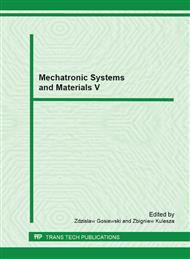p.544
p.550
p.556
p.561
p.567
p.575
p.581
p.587
p.593
Tribological Properties of Selected Self-Made Solutions of Synthetic Saliva
Abstract:
The present paper describes the results of tests on the influence of selected self-made solutions of synthetic saliva on tribological characteristics of implant materials on the example of the Co-Cr-Mo alloy. The used saliva substitutes were prepared on the basis of gums (xanthan, guar, arabic and carob bean) dissolved in saline buffer. Analysis of the values of the coefficient of friction and the wear of the tested dental alloy in tested solutions was performed. Different values of the coefficient of friction were observed for friction pairs tested in individual solutions. Its lowest values were achieved during tests using xanthan gum with SDS (sodium dodecyl sulfate) addition, and the highest values were achieved for xanthan gum. As regards wear analysis, its lowest value was registered during lubrication with natural saliva. Among saliva substitutes, the lowest value of mass wear of dental alloy was observed in solution of xanthan gum, and the highest value was registered for carob bean gum. After friction tests, elements of the friction pair were subjected to microscope analysis using the Olympus BX61 optical microscope.
Info:
Periodical:
Pages:
567-572
Citation:
Online since:
March 2013
Keywords:
Price:
Сopyright:
© 2013 Trans Tech Publications Ltd. All Rights Reserved
Share:
Citation:


